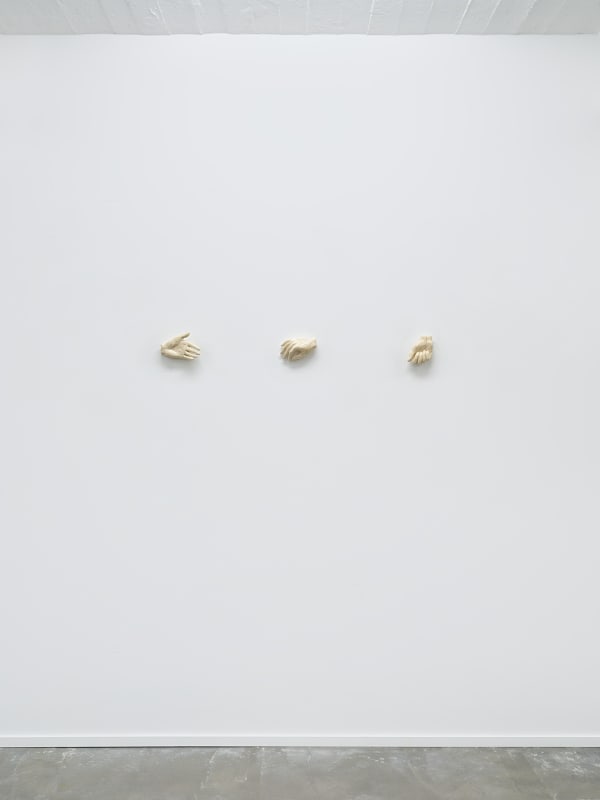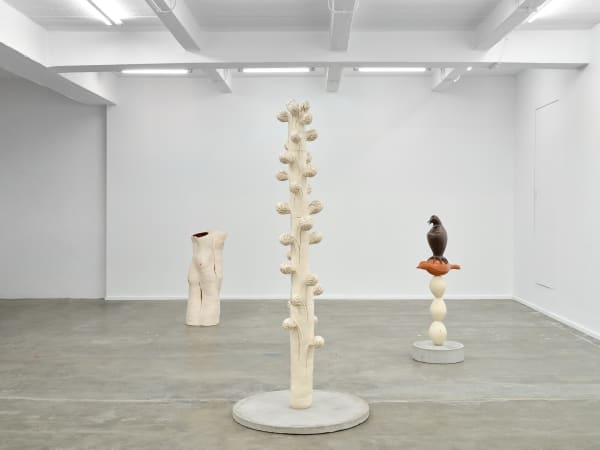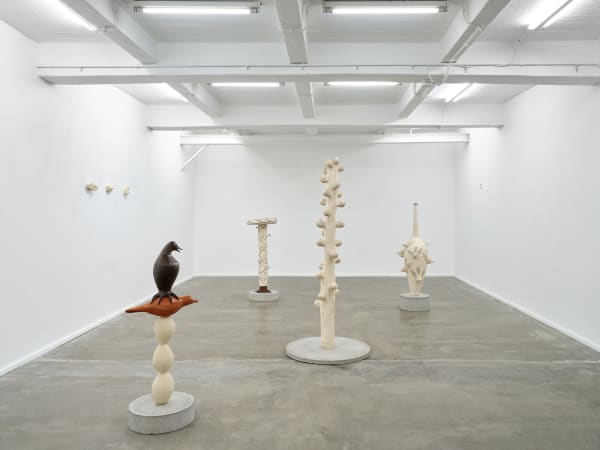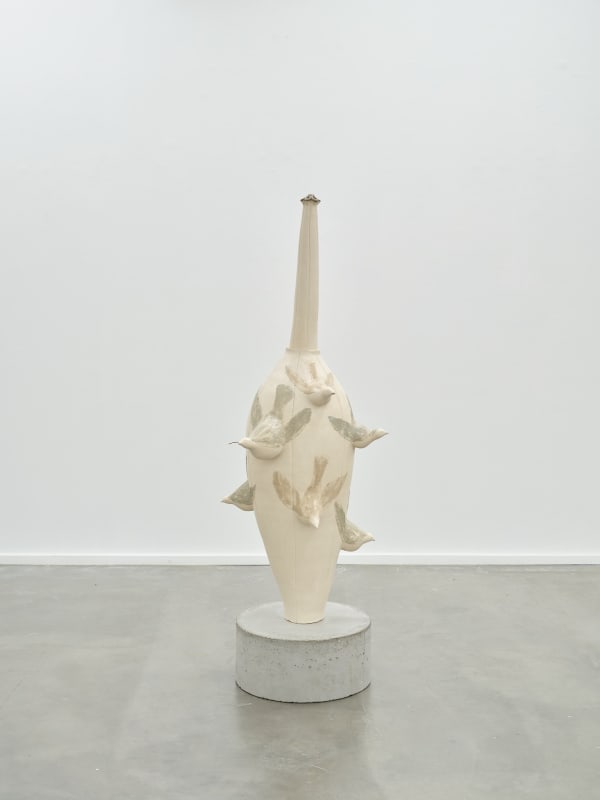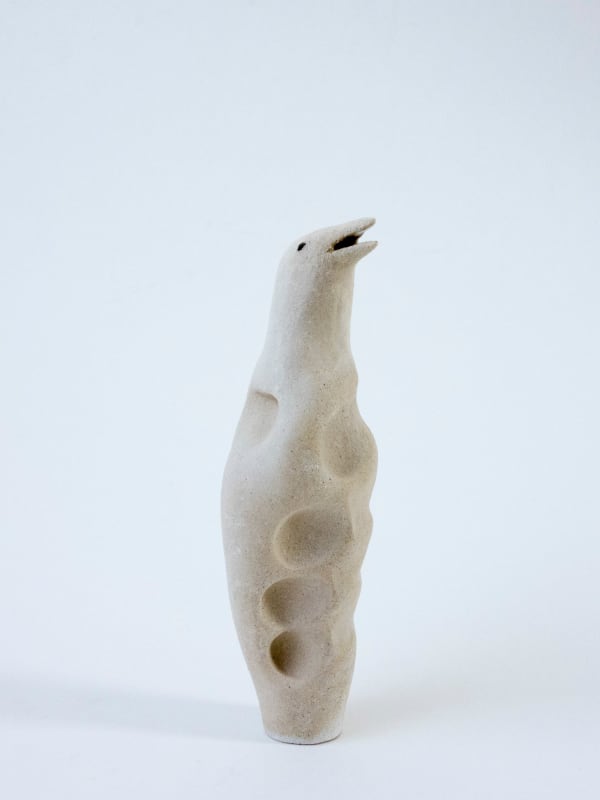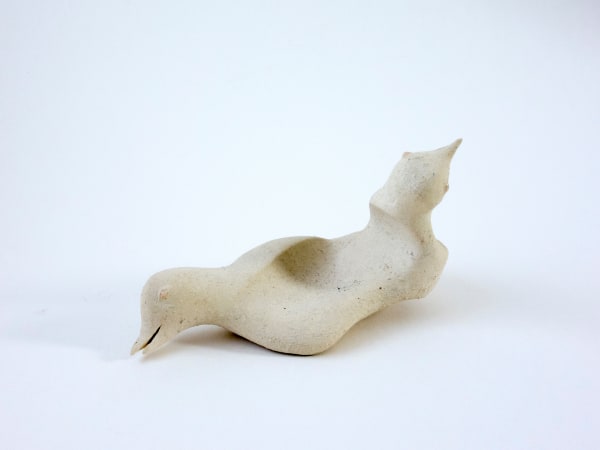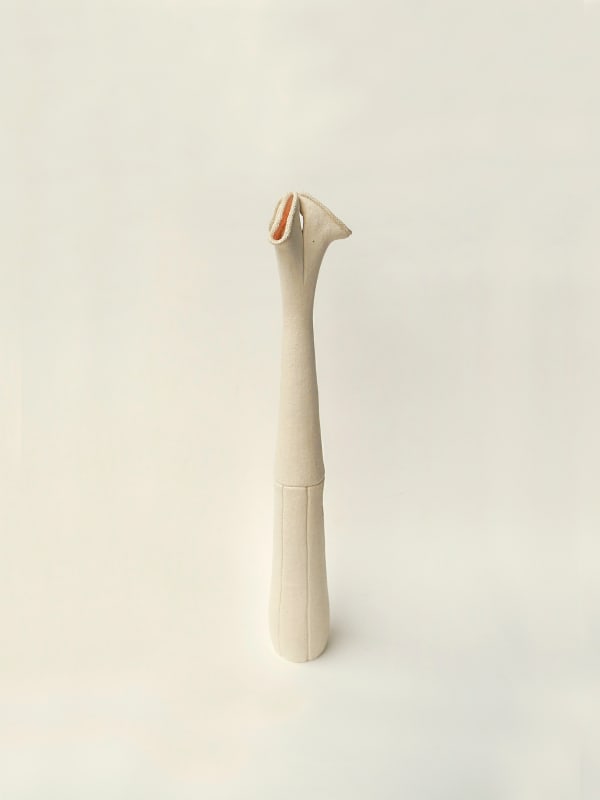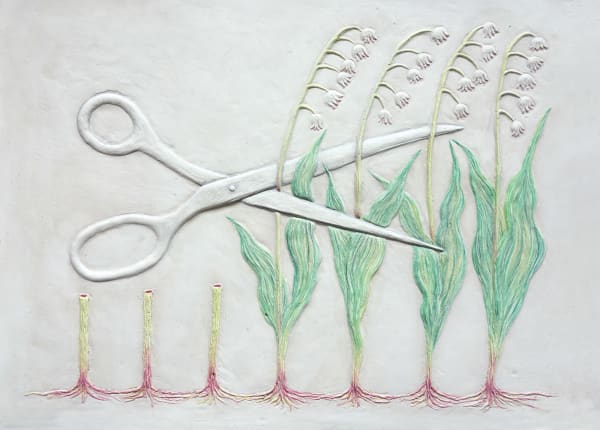Clara Spilliaert: Stambomen
KETELEER GALLERY is very pleased to present Stambomen (Family Trees), a solo exhibition by Clara Spilliaert (b. 1993, Tokyo, JP; lives and works in Ghent, BE). Clara Spilliaert's first solo exhibition at the gallery consists of a recent installation that includes several sculptures.
Clara Spilliaert grew up in Tokyo and moved to Belgium in 2009. This significant change, along with the various cultural influences she absorbed, affects and shapes Spilliaert's thematic, visual, and material choices. Seeking her Belgian roots on her father's side, Spilliaert decided at the age of 16 to take the leap and live with her grandparents in Bruges. She obtained her degree in drawing (2015) and later in ceramics (2021) at the Luca School of Arts in Ghent.
For her first exhibition at the gallery, Spilliaert primarily focuses on the meaningful subject of family trees, a versatile symbolic theme that forms the core of her literal and figurative motivations, and thus the seed of her recent work. Her search for her own origins soon gained a new dimension when her sister Lisa began investigating their relation to Léon Spilliaert. In addition to discovering that they indeed had a common ancestor with the artist in 1700, she noticed how family trees typically only consider the male name, rendering the female side completely irrelevant. This absurd notion prompted her to illuminate the often-overlooked female side of kinship alongside her exploration of her Belgian roots. Through her Stambomen sculpture series, she not only questions male dominance in genealogy and society (as in Vogelfamilie (Bird Family), 2021), but also reclaims the family tree by reinterpreting it in various ways, reuniting its artificiality with human nature.
In the gallery's ground floor space, we see Spilliaert's ceramic family tree series, including Boomlichaam (Tree Body, 2021); a skin-like bark of a tree trunk, covered with small nipples and a shiny blood-red interior layer referring to the fleshy, internal body. Moedervogelstamper (Mother Bird Pistil, 2021) also references the female side of reproduction; it is an enlarged pistil of a flower from which birds take off – a creature she feels great affinity and admiration for, symbolizing unconditional care for offspring. Spruit - Stamboom (Sprout - Family Tree, 2021) on the other hand refers to her father, who often spoke of missing Belgian sprouts, but also to how a baby is called a 'little sprout'. And so, this sculpture is another poetically revised family tree, full of small sprouts that are being nourished by veins overflowing with blood.
While Spilliaert's diary drawing (2009-2017) was a way to stay close to herself amidst her uprooted situation, the decision to study ceramics in 2018 marked the start of a new phase. Just as she used to work with her hands in her mother's garden, she began to re-experience a direct connection with the material, in this case, clay. Some sculptures therefore directly reference herself, not only her family tree and gender but also her own materiality. For Boomlichaam, for instance, she used 50 kilograms of clay, as much as she weighs, and the red edge in Bloedfontein (Blood Fountain, 2021) indicates exactly 4 liters, as much as her own blood volume.
The desire to get closer to the earth and thereby her own nature forms an important thread through Spilliaert's entire oeuvre. In her most provocative drawings, we even see a woman making love to a tree. Repeatedly, she bridges the boundaries between biological species by intertwining plant, animal, and human. Just as she often uses fruit and seeds as formal elements, the eyes on the wings of Nachtvlinders (Moths, edition, 2024) are replaced by the 'eyes' seen on some trees. While gardening, Spilliaert truly cares for plants, especially when some vegetables need to be pollinated manually, making her feel closely connected to them. This feeling is subtly yet strikingly translated in Zaai, bestuif, pluk (Sow, Pollinate, Pick, 2021), where the gardening hand has been given leaf veins instead of blood veins. With this work Spilliaert wants to pay an homage to the universal and cyclical nature of agricultural labour.
Spilliaert's close bond with both the animal and plant worlds, which she has cultivated since childhood by raising butterflies on her own, is one she cherishes more than anything and strives to capture and express through her art. By uniting nature and humanity in her sculptures and drawings, Spilliaert reminds us of the parallel between the animal and plant world on one hand, and the often alienated human world on the other. Additionally, her work consistently contains critical reflection. She frequently challenges social and sexual norms and questions established cultural ideas, doing so through a poignant and insightful interplay of historical and mythological references, symbolism, metaphors, and personal memories.
Lauren Wiggers, 2024.
In 2020, Clara Spilliaert won the Grand Prix of the CAF (Contemporary Art Foundation) Award, Japan's largest prize for art students. In 2022, she held her first solo exhibition in Tokyo and published "SEKIRARA" with MER.Books, a selection of her diary drawings. For her solo exhibition in 2023, she created an in-situ installation at Lichtekooi Artspace, Antwerp, in which she explored the analogy between the treatment of body hair and gardens. During this exhibition, she received the 2023 Fintro Prize for Visual Arts
-
 Clara Spilliaert, Bloedfontein (uit de stamboomreeks), 2021
Clara Spilliaert, Bloedfontein (uit de stamboomreeks), 2021 -
 Clara Spilliaert, Boomlichaam (uit de stamboomreeks), 2021
Clara Spilliaert, Boomlichaam (uit de stamboomreeks), 2021 -
 Clara Spilliaert, Vogelfamilie (uit de stamboomreeks), 2021
Clara Spilliaert, Vogelfamilie (uit de stamboomreeks), 2021 -
 Clara Spilliaert, Moedervogelstamper (uit de stamboomreeks), 2021
Clara Spilliaert, Moedervogelstamper (uit de stamboomreeks), 2021
-
 Clara Spilliaert, Spruit-stamboom (klein, uit stamboomreeks), 2021
Clara Spilliaert, Spruit-stamboom (klein, uit stamboomreeks), 2021 -
 Clara Spilliaert, Zaai, bestuif, pluk (uit de stamboomreeks), 2021
Clara Spilliaert, Zaai, bestuif, pluk (uit de stamboomreeks), 2021 -
 Clara Spilliaert, Eggholder, 2021
Clara Spilliaert, Eggholder, 2021 -
 Clara Spilliaert, Wombvase, 2020
Clara Spilliaert, Wombvase, 2020
-
 Clara Spilliaert, Four talking birds, 2021
Clara Spilliaert, Four talking birds, 2021 -
 Clara Spilliaert, Three eyed bird, 2020
Clara Spilliaert, Three eyed bird, 2020 -
 Clara Spilliaert, Little bird 01, 2021
Clara Spilliaert, Little bird 01, 2021 -
 Clara Spilliaert, Little bird 02, 2021
Clara Spilliaert, Little bird 02, 2021

